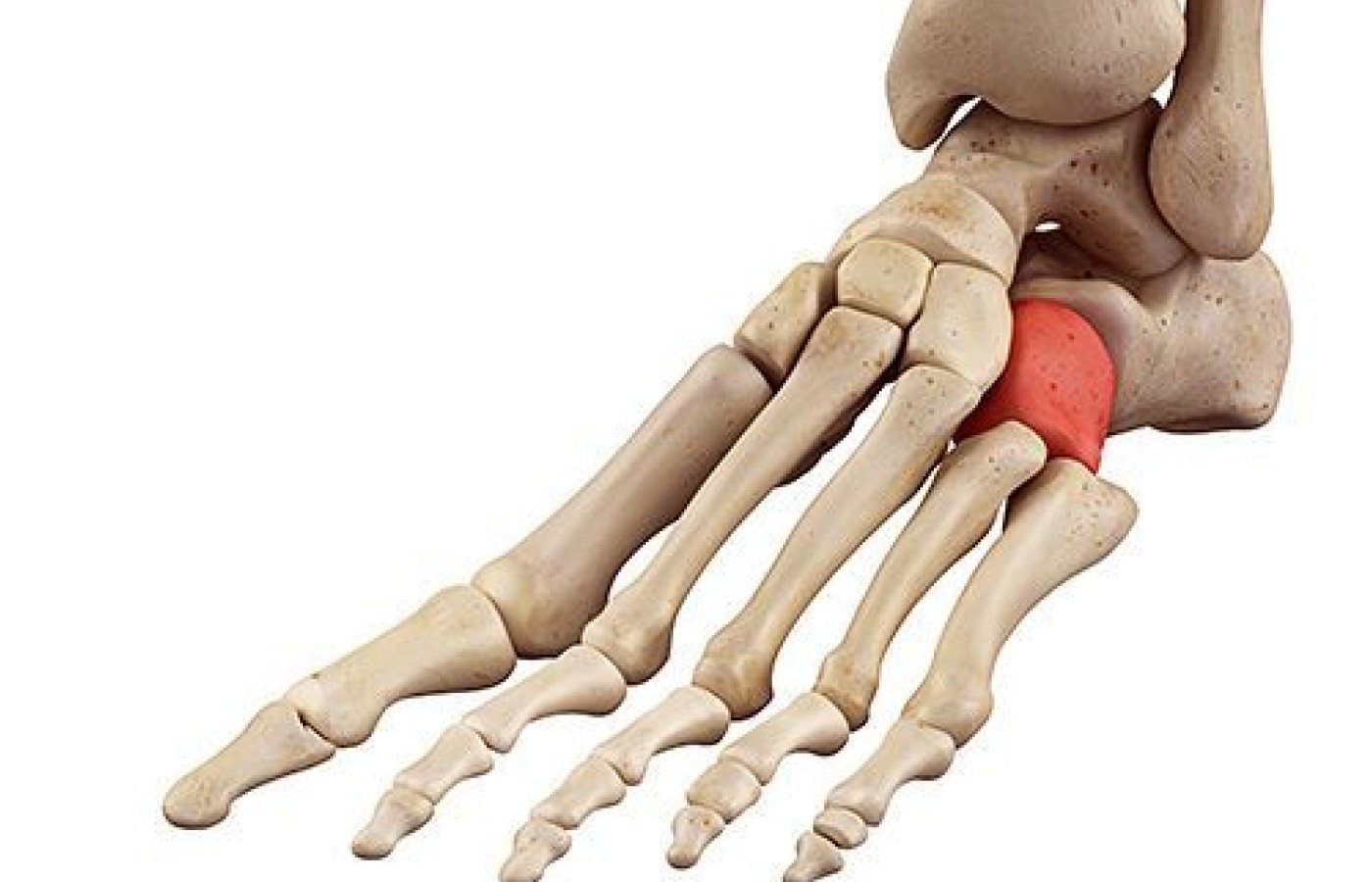Cuboid syndrome is a condition characterized by pain and dysfunction in the cuboid bone, which is located on the outer side of the midfoot. It typically occurs when the cuboid bone becomes misaligned or subluxed, often due to repetitive stress or an ankle sprain. Cuboid syndrome can cause pain, swelling, and difficulty with weight-bearing and walking.
Managing cuboid syndrome involves a comprehensive approach to reduce pain, realign the cuboid bone, restore function, and prevent further complications. By applying the 5 stages of rehabilitation, individuals with cuboid syndrome can effectively recover and regain optimal foot function.
- Pain management: The first stage focuses on managing pain and reducing inflammation in the affected area. Physiotherapists may employ manual therapy techniques to help align the cuboid bone along with ice / heat therapy to alleviate pain and promote healing.
- Range of motion: Once pain is under control, the emphasis shifts to restoring normal range of motion in the foot and ankle. Physiotherapists prescribe gentle stretching and range of motion exercises to improve flexibility, reduce stiffness, and promote/maintain correct alignment of the cuboid bone. These exercises aim to gradually increase the mobility and flexibility of the foot.
- Motor control and balance: This stage focuses on improving motor control, proprioception, and balance to enhance foot stability and prevent further subluxation of the cuboid bone. Physiotherapists prescribe specific exercises that target the muscles and ligaments around the foot and ankle. These exercises may include balance training, proprioceptive exercises, and strengthening exercises to improve joint control and prevent abnormal movement patterns.
- Strength training: Strengthening the muscles surrounding the foot and ankle is crucial for providing support and stability to the cuboid bone. Range Physiotherapists will design a personalized exercise program that targets the intrinsic foot muscles, calf muscles, and other foot and ankle muscles. These exercises may include toe curls, calf raises, ankle inversion and eversion exercises, and other specific strengthening exercises to gradually build strength and improve foot stability.
- Maintenance and prevention: The final stage focuses on maintaining the gains achieved through rehabilitation and implementing strategies to prevent future cuboid syndrome. Range Physiotherapists will provide guidance on proper footwear, orthotics, and modifications to prevent excessive stress on the cuboid bone. They may also assess movement patterns and provide recommendations on activity modifications and gradual return to activities to avoid reoccurrence.
Working closely with a qualified physiotherapist who specializes in foot and ankle rehabilitation is crucial. Range Physiotherapists will assess the severity of the cuboid syndrome, perform manipulative techniques to realign the cuboid bone, develop a personalized treatment plan based on the 5 stages of rehabilitation, and monitor progress throughout the process. With proper treatment, exercises, and adherence to preventive strategies, individuals with cuboid syndrome can experience pain reduction, improved foot function, and a reduced risk of further complications.
For more information regarding cuboid syndrome please see: https://www.ncbi.nlm.nih.gov/pmc/articles/PMC3445231/


